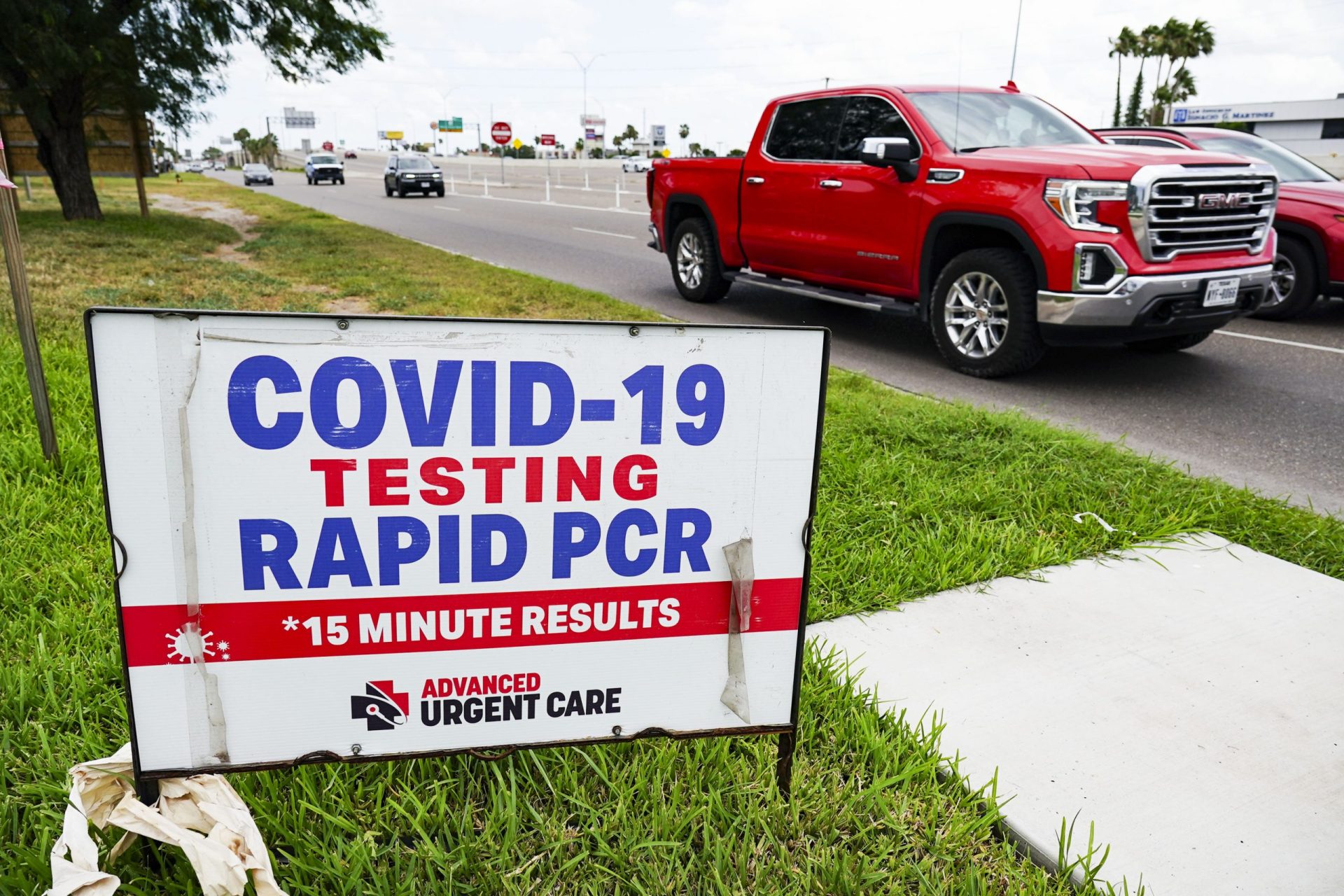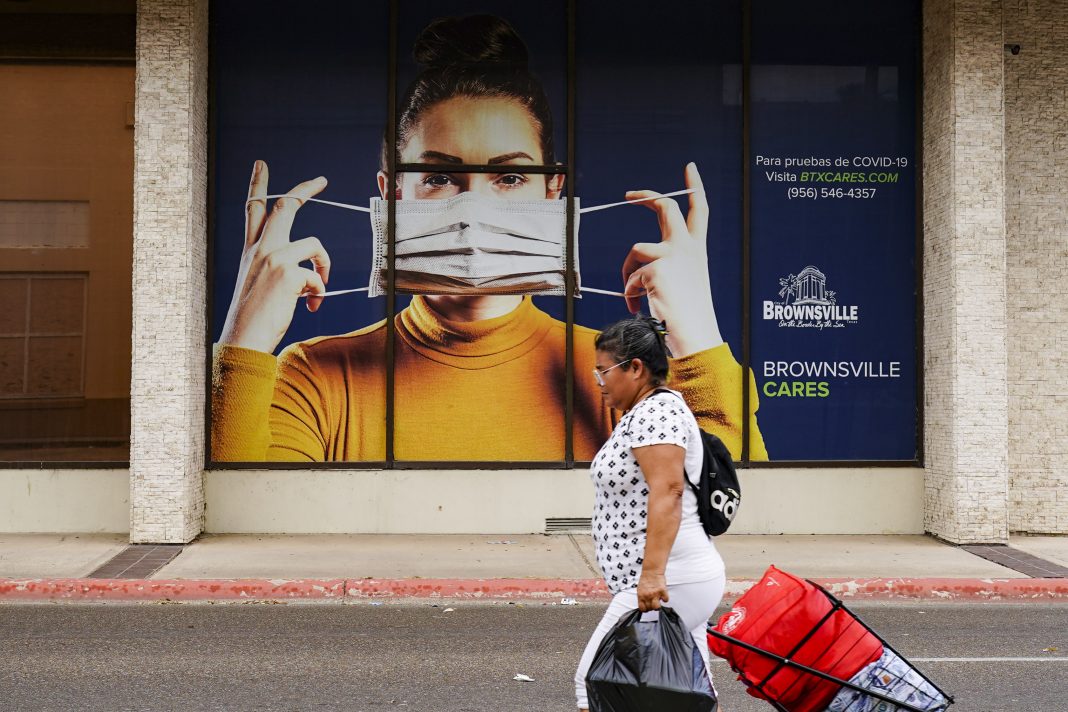New COVID-19 cases are on the rise once again in the Rio Grande Valley and local health officials are, once again, reminding area residents of ways to reduce the risk of infection and possible long-term complications.
Dr. Christopher Romero, an internal medicine specialist with Valley Baptist Medical Center-Harlingen, said the ongoing rise in cases wasn’t unexpected, since COVID-prediction scientific models saw it coming.
“Organizations such as the Institute for Health Metrics and Evaluation earlier this year developed predictive models that forecasted a rise in COVID-19 cases towards the end of June and into July,” he said.
It’s happening across the Valley and across the country, Romero said. While Cameron County was averaging 50 new COVID cases daily in mid-April, the average was up to 250 new cases by the end of June, he said.
“More than 30 percent of tests are currently positive in Cameron County, and COVID-19 related hospitalizations have again risen 25 percent in the past two weeks,” he said.
At VBMC-Harlingen, the COVID inpatient census has increased 33 since June 29, while at VBMC-Brownsville the last three weeks of daily COVID inpatient admissions were more than double than the previous three weeks.
Experts point to the new, much more transmissible Omicron BA.5 variant, which is much better at escaping immunity through vaccination or prior infection, and to the fact that COVID safety measures have relaxed substantially, as two major factors behind the current surge. In April the Omicron BA.2 variant was responsible for more than 80 percent of new cases, though now it’s the culprit in only about 5 percent of cases while the newer BA.5 has become dominant, Romero said.
“Studies have shown that immunity from infection during previous waves of the pandemic, or immunity gained from vaccination last year, is less effective at preventing symptomatic infections during this current rise in cases,” he said.

Also, a lot of people have stopped wearing masks but are back to traveling and gathering like before the pandemic, with the number of people hitting the road for the Fourth of July rivaling pre-pandemic levels, Romero said. While everybody is understandably weary of pandemic life after more than two years, there’s good news about COVID vaccines, he said.
While vaccinations and boosters don’t offer 100 percent protection against infection, they’re still “incredibly effective” at preventing severe COVID-related illness and keeping people out of the hospital or dying, Romero said. He pointed to a recent New England Journal of Medicine story that found that three doses of the Pfizer-BioNTech vaccines was about 52 percent effective at preventing symptoms of BA.2, but more than 98 percent effective at preventing severe disease.
Romero said many pharmacies also have COVID oral therapies available that if used early enough can keep people from getting so sick they wind up in the hospital. He called it a “game changer.”
“If people get sick they definitely need to take it seriously, because sometimes it can filter into a major infection, and also because nowadays you can do something about it, which early in 2020 you really couldn’t,” Romero said.
He said subsequent COVID variants are inevitable, though the trend over the last two years has been toward better survivability.
“Hopefully we’ll continue to see a trend of reduced severity as more and more people have immunity from vaccination and actual infection, and as the virus reaches a more steady state within the human population,” Romero said.
Dr. Beverly Zavaleta, a family medicine physician and physician adviser for VBMC-Brownsville, said everyone who is eligible for vaccinations and boosters should get them — particularly children, with the start of school a month away. Vaccines are approved for children starting at 6 months, and a booster shot is recommended for kids 12 and older, she said.
“Late July is a perfect time to get your kids vaccinated since it takes at least two weeks for the body to make antibodies in response to the shot,” Zavaleta said.

Adults 50 years or older should get their second booster shot, or their primary vaccine series if they haven’t done so already, she said. Zavaleta said residents need to weigh their risk of COVID infection and give serious thought to wearing a mask on public transportation or when in crowded indoor spaces such as grocery stores and movie theaters.
“Even if you are fully vaccinated and boosted, consider your risk of infection based on how much virus is currently circulating in the community, and wear a mask indoors in public when the risk is high,” she said.
Masks are important because even mild infection can lead to “long COVID” in about 20 percent of adults, Zavaleta said. People with it suffer debilitating symptoms such as shortness of breath, fatigue and difficulty concentrating. This can go on for six months or more and women are the most at risk, Zavaleta said.
Another way to prevent the spread of COVID and other illnesses is to encourage healthy hygiene habits in children at home and at school, she said.
“We should remind our kids about good infection-prevention practices in a routine way without causing alarm, and this was true even before COVID,” Zavaleta said. “We should encourage children to wash their hands before eating, as well as after recess and using the restroom.”




